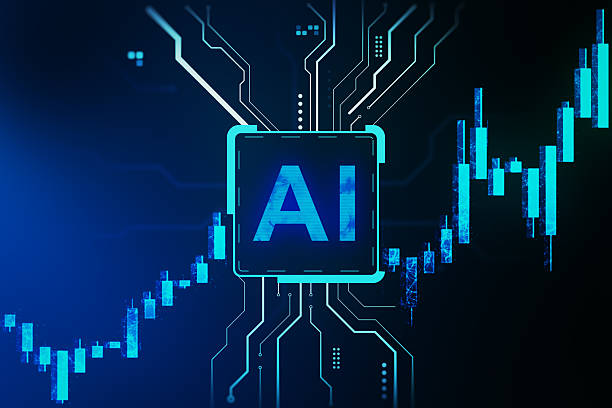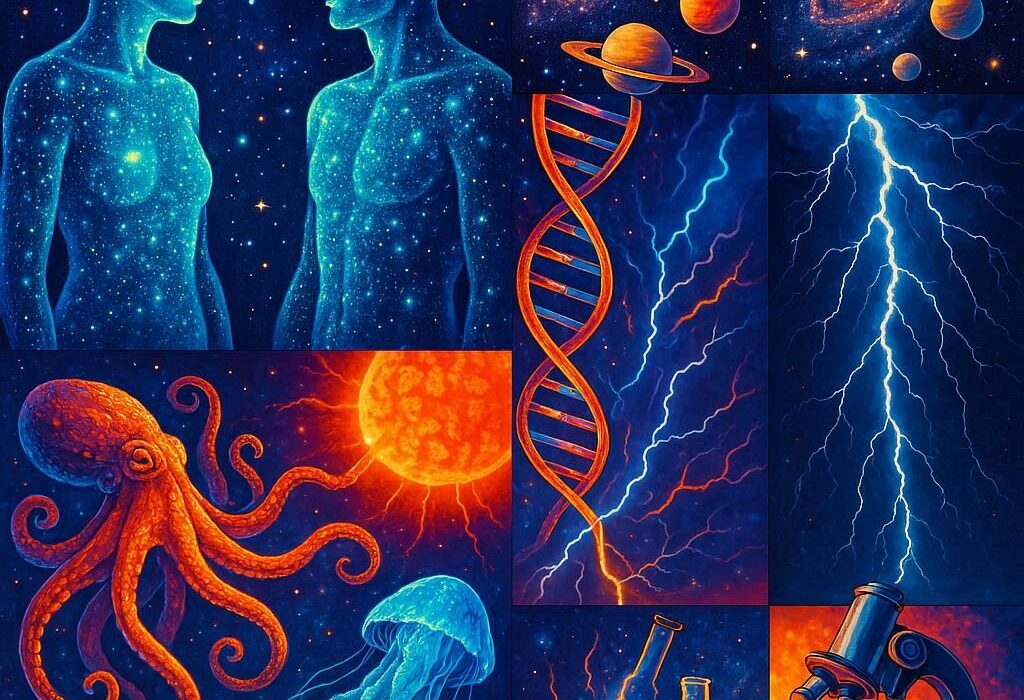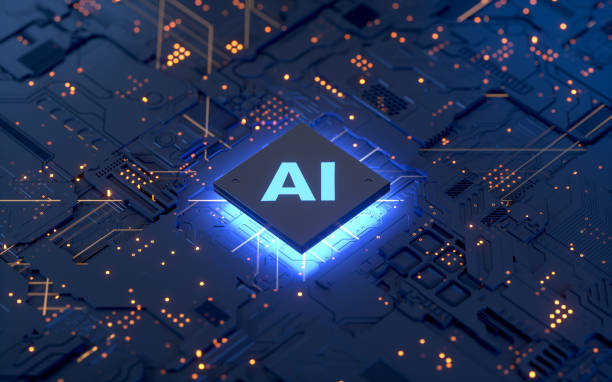Artificial Intelligence (AI) is no longer just a futuristic concept confined to science fiction movies or research laboratories. Today, AI has woven itself into the fabric of our daily lives, often in ways we don’t even notice. From unlocking your phone with facial recognition to getting personalized recommendations on Netflix or having a chatbot handle your online queries, AI quietly shapes how we live, work, and connect with the world.
The most fascinating thing about AI is that it’s not some distant, abstract force—it’s here, all around us. It learns from patterns, adapts to behavior, and improves services in real time, making life more efficient, personalized, and sometimes even magical. Yet, the science behind it is firmly grounded in mathematics, algorithms, and data.
In this article, we’ll explore the 10 best examples of Artificial Intelligence in everyday life, showing you just how deeply this technology has already become part of our world.
1. Virtual Assistants (Siri, Alexa, Google Assistant)
“Hey Siri, what’s the weather today?” “Alexa, play some music.” “Hey Google, remind me to call Mom at 6.”
Virtual assistants are perhaps the most well-known examples of AI in our daily routines. These voice-powered companions rely on Natural Language Processing (NLP) and machine learning to understand human speech, process it, and respond in a conversational manner.
What makes them fascinating is their ability to learn from usage. Over time, your virtual assistant gets better at predicting what you mean, recognizing your voice, and tailoring responses to your preferences. Whether it’s managing smart home devices, answering trivia, setting alarms, or reading out news updates, these assistants bring AI right into our living rooms.
Beyond convenience, they also illustrate one of the most human-like capabilities of AI: the ability to communicate naturally, bridging the gap between people and machines.
2. Personalized Recommendations (Netflix, YouTube, Spotify, Amazon)
Ever wondered how Netflix always seems to know what you want to watch next, or how Spotify creates a playlist that feels like it was made just for you? This is AI in action—personalized recommendation systems.
These platforms collect massive amounts of data on what you watch, listen to, or buy, and then use algorithms to find patterns. Through techniques like collaborative filtering and deep learning, AI predicts what you might like based on your past behavior and the behavior of users similar to you.
On Netflix, AI doesn’t just recommend shows—it also customizes the thumbnails to highlight scenes or characters it predicts will appeal to you. Spotify’s “Discover Weekly” playlist uses your listening habits to curate fresh music every Monday. Amazon does the same with shopping suggestions, turning browsing into buying.
What seems like a magical ability to read your mind is actually AI analyzing terabytes of data in real time, reshaping entertainment and shopping into deeply personal experiences.
3. Navigation and Ride-Sharing Apps (Google Maps, Uber, Lyft)
Imagine a world without GPS and real-time traffic updates—it feels almost impossible now. AI powers the navigation systems we rely on daily. Apps like Google Maps and Waze use AI to analyze traffic patterns, road closures, and accidents, providing optimized routes in seconds.
But AI’s role goes deeper. Ride-sharing apps like Uber and Lyft harness AI for dynamic pricing (adjusting fares based on demand), driver-passenger matching, and route optimization. When you order a ride, AI quickly calculates which driver can reach you fastest while minimizing waiting times and fuel use.
Machine learning models also predict demand in certain areas, guiding drivers where rides are more likely to be requested. This reduces wait times and improves efficiency for both riders and drivers.
Thanks to AI, navigating cities has become smarter, faster, and far less stressful than ever before.
4. Social Media Feeds and Algorithms (Facebook, Instagram, TikTok, Twitter/X)
Scrolling through your social media feed feels natural, but behind the scenes, AI is carefully shaping what you see. Platforms like Facebook, Instagram, TikTok, and Twitter/X use AI-powered algorithms to decide which posts, videos, or ads appear at the top of your feed.
These algorithms analyze your likes, comments, shares, viewing time, and even pauses to understand what captures your attention. For instance, TikTok’s algorithm is famously effective because it constantly adjusts your feed based on every second you spend watching or skipping videos.
Beyond feeds, AI powers photo tagging, content moderation, and spam detection. Facebook’s facial recognition can suggest tags for photos, while AI models detect and remove harmful or inappropriate content at scale.
In short, AI doesn’t just personalize social media—it curates your online reality, subtly shaping how you consume information and interact with the world.
5. Smart Home Devices (IoT + AI)
From thermostats that learn your temperature preferences to lights that turn off when you leave the room, smart home devices are powered by AI. These gadgets, part of the broader Internet of Things (IoT), use machine learning to adapt to your routines and optimize energy use.
Take the Nest thermostat as an example. It learns when you’re home, when you’re away, and what temperature you prefer, automatically adjusting settings to maximize comfort and save energy. Smart speakers like Amazon Echo or Google Home integrate with multiple devices, enabling voice-controlled automation for lights, locks, appliances, and security systems.
AI makes these homes not just connected, but intelligent—capable of anticipating needs, improving efficiency, and creating a sense of futuristic convenience right within our walls.
6. Online Shopping and E-Commerce (Chatbots, Fraud Detection, Visual Search)
When you shop online, AI is everywhere—helping you, guiding you, and even protecting you.
Chatbots powered by conversational AI are available 24/7 to answer questions, track orders, and resolve issues. Unlike human agents, they never tire and can handle thousands of interactions simultaneously.
Fraud detection systems also rely on AI. By analyzing billions of transactions, machine learning models can detect suspicious activity in real time, flagging potential fraud before it causes harm.
Visual search is another emerging field: on platforms like Pinterest or Google Lens, you can upload an image, and AI will find visually similar products or items across the web. This transforms how we discover and purchase items, making shopping more intuitive than ever.
Together, these applications show how AI reshapes the entire shopping journey—from customer service to security to discovery.
7. Healthcare and Fitness (Wearables, Diagnostics, Virtual Care)
AI is saving lives, improving health, and empowering individuals to take control of their well-being.
Wearable devices like Fitbit, Apple Watch, and Samsung Galaxy Watch use AI to monitor vital signs, track workouts, detect irregular heartbeats, and even predict health risks. These devices don’t just collect data—they interpret it, offering insights and alerts that can prevent serious medical conditions.
In hospitals, AI aids doctors in diagnosing diseases. For example, algorithms can detect cancers, retinal diseases, or heart issues from medical scans with accuracy sometimes surpassing human specialists. AI-powered chatbots also provide initial consultations, reducing the burden on healthcare systems.
Virtual care and telemedicine, powered by AI, exploded during the COVID-19 pandemic. From symptom checkers to remote monitoring, AI has made healthcare more accessible and personalized than ever before.
8. Banking and Finance (AI Trading, Fraud Prevention, Customer Service)
Finance is a world where milliseconds matter, and AI has become indispensable. Banks, stock markets, and fintech companies all rely heavily on AI.
AI-driven trading algorithms analyze vast amounts of financial data to make trades at lightning speed, often identifying opportunities invisible to human traders. Fraud prevention systems detect unusual spending patterns, automatically blocking suspicious transactions in real time.
Chatbots in banking apps assist customers with balance inquiries, fund transfers, and financial advice, reducing wait times and improving accessibility. Personal finance apps like Mint or Cleo use AI to analyze spending habits, create budgets, and provide insights into saving.
From Wall Street to your mobile wallet, AI ensures that the financial world runs smarter, faster, and safer.
9. Email and Communication (Spam Filters, Smart Replies, Language Translation)
If you’ve ever noticed that spam rarely clogs your inbox anymore, you have AI to thank. Spam filters use machine learning to recognize patterns in unwanted messages, filtering them out with astonishing accuracy.
Email platforms like Gmail also use AI for smart replies and predictive text. As you type, AI suggests complete sentences, saving time and effort. Similarly, apps like Google Translate harness AI-powered neural networks to translate languages in real time, breaking down barriers in global communication.
AI also powers real-time transcription services, turning spoken language into text—a game-changer for accessibility and productivity. In ways big and small, AI enhances how we communicate every single day.
10. Autonomous Vehicles and Transportation
Self-driving cars may still feel futuristic, but AI is already at the heart of transportation technology. Companies like Tesla, Waymo, and Uber are developing autonomous vehicles that use computer vision, sensor fusion, and deep learning to navigate roads.
These cars process enormous amounts of data from cameras, radar, and lidar in real time, making split-second decisions about speed, braking, and steering. While fully autonomous cars are still in development, semi-autonomous features—like lane-keeping assistance, adaptive cruise control, and automatic emergency braking—are already saving lives.
Beyond cars, AI is being used in public transportation systems for route optimization, predictive maintenance of trains and buses, and even drone deliveries. Step by step, AI is reshaping how humans move across cities and countries.
Conclusion
Artificial Intelligence is no longer a futuristic dream—it’s an everyday reality. From the way we communicate and shop to how we travel, stay healthy, and even relax, AI is seamlessly integrated into our routines. Often invisible, it works quietly in the background, learning from us, adapting to us, and making life more efficient and personalized.
Yet, what’s most remarkable is that we’re still at the beginning of the AI revolution. As technology advances, AI will only grow more sophisticated, bringing both incredible opportunities and important challenges. The examples we see today—virtual assistants, smart homes, healthcare diagnostics—are just the early chapters in a much larger story.
By understanding AI’s role in our daily lives, we not only appreciate the technology itself but also gain insight into how deeply connected we are with the digital intelligence shaping our future.






